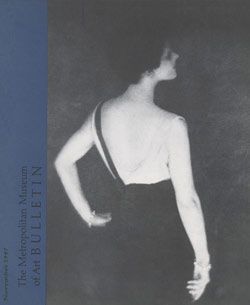Incroyables et Merveilleuses
Designer Horace Vernet French
Engraver Georges Jacques Gatine French
Not on view
Book with 33 hand-colored engravings with designs for men's and women's costume, designed by Horace Vernet and engraved by Georges Jacques Gatine, published ca. 1815 in Paris. Titled "Incroyables et Merveilleuses", the book highlights the style of these characters, fashionable during the late 1790s and the Directoire period in France. After the Thermidor, the French began to reveal against the dress styles traditionally associated with the Revolution, including the sans-culottes, cockades, and tricolor accessories and clothes, and developed new styles, more closely associated with aristocratic fashions prior to the Revolution than to more recent styles. Perhaps the most salient, and also most widely criticized, expression of such fashions was exhibited by "les Incroyables" (the Incredibles) and their female counterparts, "les Merveilleuses" (the Marvelous). The typical outfit of these new dandies consisted of a double-breasted, square jacket, similar to a redingote with cut tails, deformed vest with heavily stuffed pockets, white scarves around the neck, tight-fitting breeches with long ribbons dangling below the knees, and open, pointed flat shoes.The Merveilleuses wore Neoclassical style dresses, with high waists and open necklines, narrow skirts, and often made up of light fabrics such as muslin, to assimilate the style of the mythical females of classical antiquity; their hair was often made in a variety of styles, or covered with the different hats that were popular at the time, including bonnets, toques, turmans, and the popular cornette. Incroyables and Merveilleuses were often criticized for their love of fashion, still associated with the ills of the pre-Revolutionary monarchy, and were subject of a wide number of caricatures that exposed them as worthless citizens and women with loose morals. Their style, however, has come to be associated with the fashions of the Directoire and the Empire, with Empress Josephine being one of the most popular Merveilleuses before her marriage to Napoleon.


